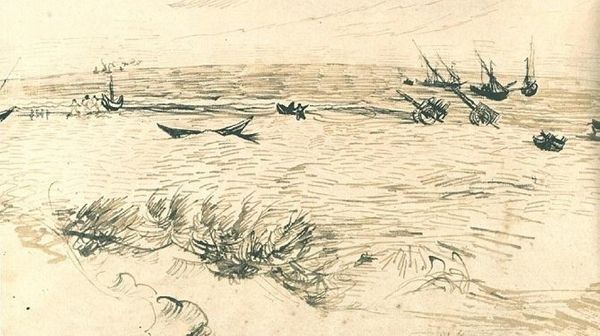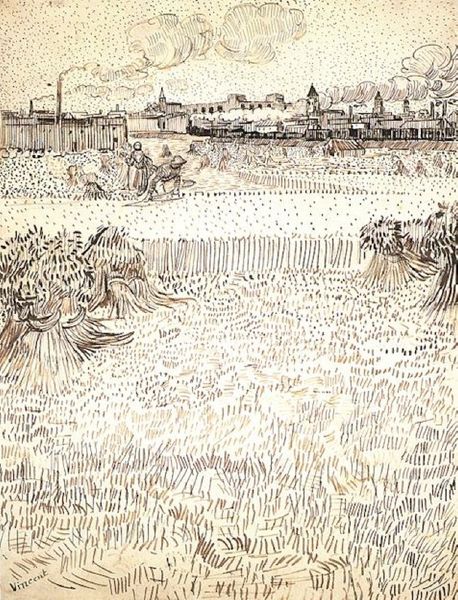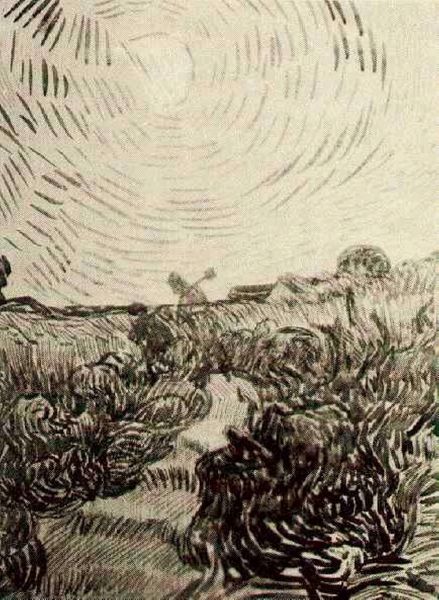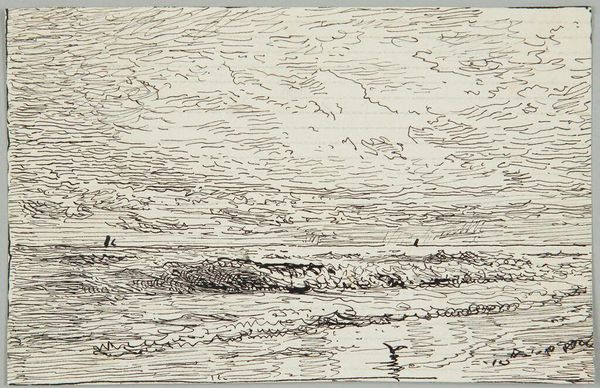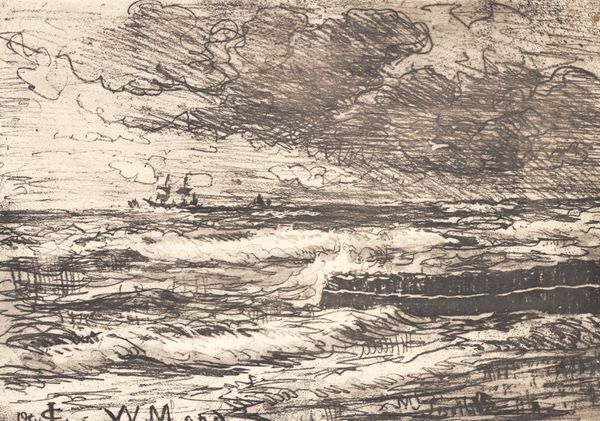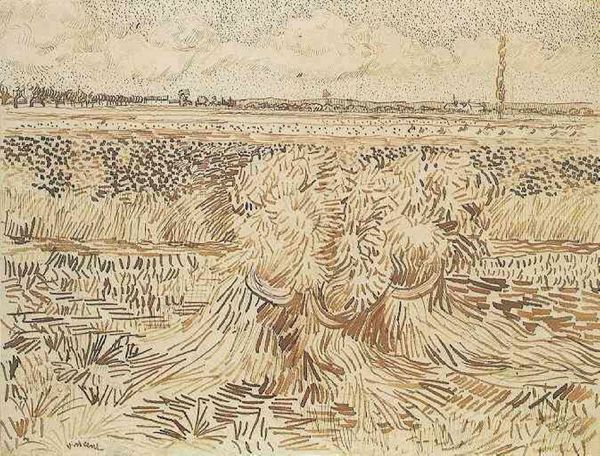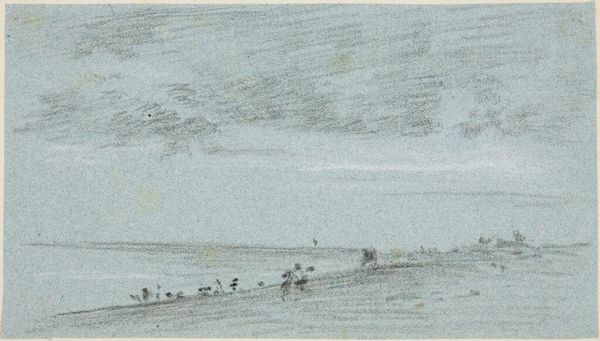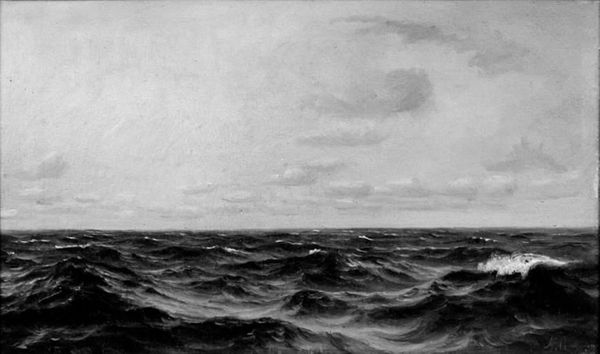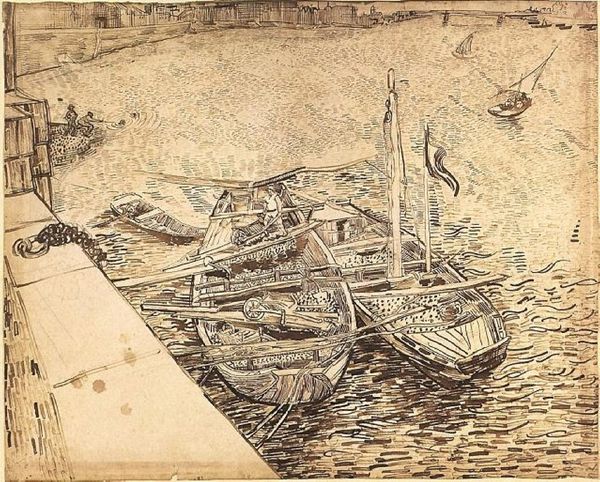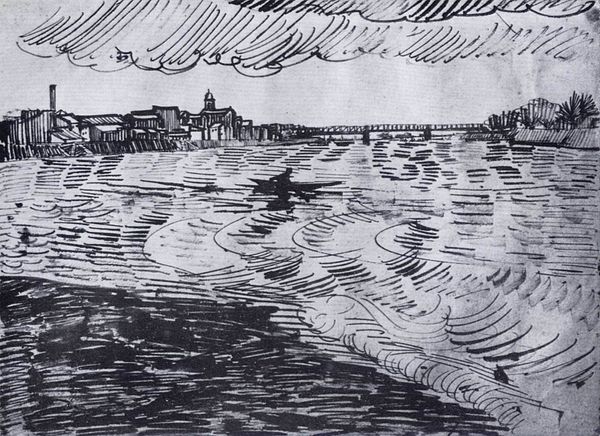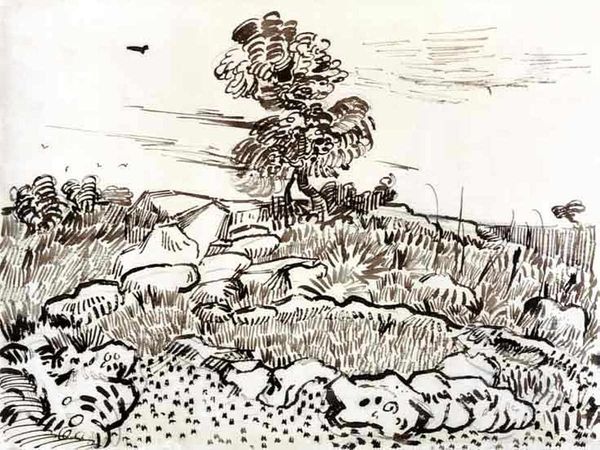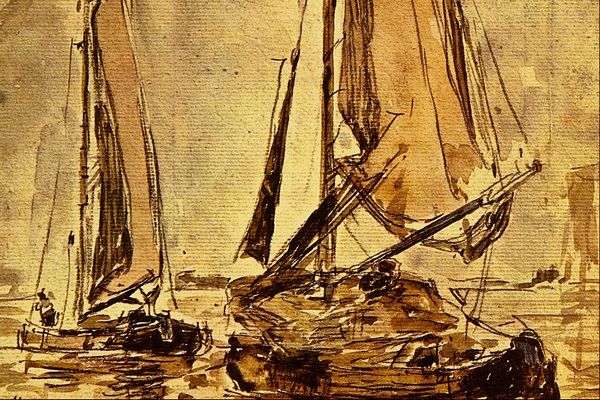
drawing, plein-air, ink
#
drawing
#
boat
#
fish
#
ink painting
#
ship
#
impressionism
#
plein-air
#
landscape
#
impressionist landscape
#
oil painting
#
ocean
#
ink
#
water
#
post-impressionism
#
sea
Copyright: Public domain
Editor: Van Gogh's "A Fishing Boat at Sea," created in 1888 using ink, really strikes me with its turbulent energy. The way he renders the water, almost as a series of frantic brushstrokes, evokes a sense of unease. How do you interpret this work, especially considering the social context of the time? Curator: The choice of subject is very telling. Van Gogh was deeply interested in the lives of the working class. Images of laboring fishermen resonated with broader artistic concerns regarding the dignity of manual labor and the relationship between humans and nature that permeated much late 19th-century art. Do you notice how the boats seem small, almost insignificant, against the vastness of the sea? Editor: Yes, it's as if they're at the mercy of nature. Does this representation tie into a larger societal narrative? Curator: Precisely. This speaks to the precariousness of the lives of these workers, facing unpredictable elements. It also challenges the idealized landscape paintings popular at the time. Van Gogh offers us a more raw, unvarnished reality of working-class life, reminding viewers of the social disparities present in Europe at the time, and echoing sentiments found in naturalist literature. Editor: It's interesting to consider how Van Gogh uses his art to comment on the struggles of the working class. Thanks! Curator: My pleasure! And thinking about the artist in relation to the subject can offer insights on how cultural expressions, whether in literature or in painting, contribute to building collective perceptions about society.
Comments
No comments
Be the first to comment and join the conversation on the ultimate creative platform.
